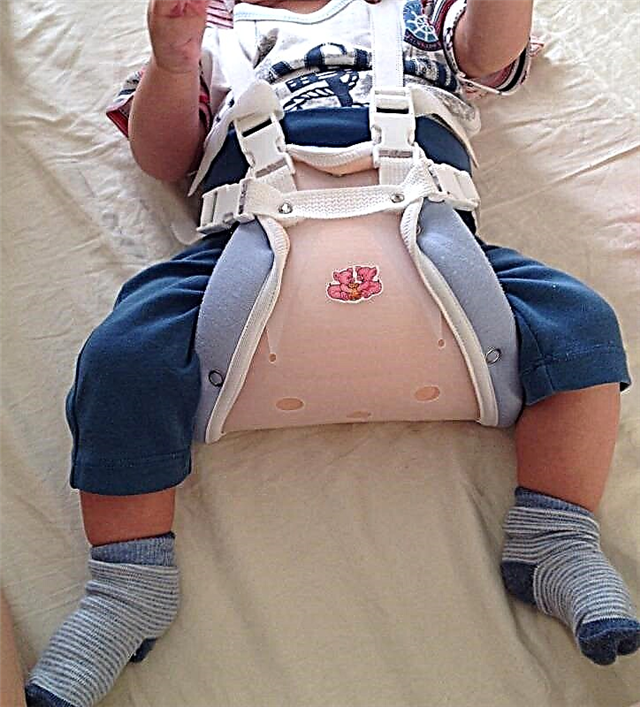
Women planning a pregnancy often use ovulation tests, which are not only disposable. Reusable test systems provide more accurate results and also save money on the purchase of disposable strips, which can be required a lot.
How do they work?
The reusable ovulation test is a device that can be used repeatedly by replacing the sensing reagent strip. Ovulation is the process of release of a mature female reproductive cell from the follicle on the surface of the ovary. This happens once a month, usually in the middle of the menstrual cycle. And it is the time of ovulation that is considered the most suitable for conception, because during this period a woman is fertile.

The reproductive cell does not live long - only 24-36 hours. If during this time her meeting with the male reproductive cell does not take place, there will be no conception. That is why it is so important to be able to determine the most favorable day for conception with maximum accuracy.
A multiple test, like a one-time test, works on the principle of a reaction to a certain hormonal background, and pregnancy tests work in the same way. But if the latter becomes positive at a certain concentration of chorionic gonadotropin (hCG) in the urine, then ovulation tests detect the content of another hormone - luteinizing... The peak LH concentration is reached about 1-2 days before ovulation, and it is this hormone in high doses that leads to the thinning and rupture of the follicular membrane.
The follicle with the egg inside matures during the first phase of the female cycle. Its increase in size is influenced by the hormone FSH. And only when the follicle reaches a large size and the oocyte in it is mature enough, the concentration of estrogen increases, which makes it possible to intensively produce luteinizing hormone. After the rupture of the follicle, LH decreases, like estrogen, progesterone begins to be produced, which supports the second half of the female cycle.

Electronic and digital ovulation tests are performed in urine and determine the concentration of LH in it.
There are another type of reusable tests - mini microscopes... They determine the onset of a favorable time for conception by saliva, and some models by vaginal discharge. The operation of such systems is not based on the determination of LH, but on capturing the day with the maximum concentration of estrogen in the woman's body. It is able to retain potassium and sodium in the physiological fluids of the body (which are salivary fluid and vaginal and cervical secretions), due to this, when the fluid dries, it acquires a very characteristic pattern resembling fern leaves or frosty patterns.
Compared to disposable tests, reusable tests are more beneficial: having paid the set price once, you no longer have to worry about having to buy packaging again in a new cycle. In addition, digital systems are more informative and some are not only an ovulation test, but also a whole mini-laboratory that can give a lot of other information about a woman's health.


System overview
Today, an ovulation test does not surprise anyone; such systems are available in any pharmacy and in online stores.
To make it easier to make a choice, it is worth considering several popular devices that have the most reviews.
Clearblue digital
The digital test allows you to accurately determine the two days in the cycle when conception is most likely. The appearance of a positive result indicates an increased content of luteinizing hormone in the urine. Manufacturers claim that the device determines the concentration of LH one day before ovulation. Accordingly, they recommend making love to a planning couple on the day of a positive result, as well as the next day.
The kit may contain a different number of strips (from 1 to 20), the strips themselves are intended for single use.

Like all digital devices, the test requires careful study of the instructions for use before a woman proceeds to self-diagnosis. Unlike disposable strips, which are not recommended for use on the morning portion of urine, the manufacturers of this test claim that there is no time limit and a woman can be tested at any time convenient for her, as long as the next test is carried out at the same time as the first one. It is not recommended to drink large amounts of fluids four hours before.
Before use, remove the protective cap from the device, insert the test strip as indicated in the instructions. Then you need to wait a little while the system gives a signal that it is ready for use. You can collect urine for him in a clean container, or you can substitute a strip under the stream (like a jet dough), this will not affect the result in any way. Since the device is digital, it is important to avoid spilling liquid on the case itself.
40 seconds after extraction, the first signal will appear, which indicates that the test is working. And after 3 minutes the result will appear.
If there is no signal, then the self-test was carried out with an error. You need to change the strip, start the device again and repeat everything, but in compliance with the instructions.

This test will not please the second strip, and the first too, since the result is not decorated with stripes, but with a smiley. If the day is favorable, then the test "smiles", if not, the device displays a circle without a smile.
The strips cannot be reused. They are thrown away after receiving the result.
The accuracy, according to manufacturers, reaches 98-99%. In use, according to reviews, this device is very simple and not burdensome. There is no need to think about whether it is working properly or not - a well-thought-out indication shows everything in real time.

Frautest cassette with cap
This test, like the previous one, works by detecting traces of luteinizing hormone in a woman's urine with a reagent. But its price is somewhat lower, this is a more affordable option.
You should also carefully read the instructions before use. In particular, it specifies in detail how exactly the strip should be placed under the stream of urine during bladder emptying in order to obtain accurate results. They are directed with arrows forward and held under the stream for about 5 seconds.

The cassette must be placed vertically!
Then the cap is put back in place and the cassette is laid out on a flat space so that it is horizontal. After 40 seconds, you can see a positive result. But with a negative, everything is longer - it is displayed for 10 minutes... It makes no sense to wait more than half an hour - the manufacturers claim that the results obtained after 30 minutes cannot be considered valid.
The result is expressed in the form of stripes familiar to women in a specially designated window. If the second strip is less bright than the first, manufacturers recommend waiting a few more days, the level of the LH hormone has not yet reached its peak. Only bright, equally colored stripes speak of the onset of ovulation.

Ovulation test microscope
This is a more expensive option, but its cost pays off rather quickly, since its operation does not depend on the availability of replaceable strips or on any other consumables. Most of these tests resemble lipstick in appearance. Removing the cap reveals a small microscope with high magnification. There are models that look like a microscope, and there are tests that outwardly resemble an inconspicuous item in a woman's purse - a powder compact.


Regardless of the design, the principle of operation is the same for all devices and the use is also similar: saliva or secretions are applied to a clean test glass (if such a function is provided by the manufacturer). You need to wait until the biological fluid dries up, place it under the eyepiece and examine the drawing. Comparative plates are attached to the devices, in which there are understandable illustrations of how the ovulatory period looks like, and how it is infertile, when conception is impossible or unlikely.
The microscope accuracy exceeds that of other test systems and approaches 100%.
If you want to buy just such a device, you should pay attention to the following models.
FertoTest - a small microscope that looks like a microscope. Can be used for people and pets (for example, to choose the time for mating a dog or cat). There is a convenient system for changing the focusing of the optics, as well as spare glasses.

- Fertile Focus - looks like a lipstick, easy to carry in your purse, runs on a small battery. Testing does not take more than 5 minutes, and therefore a woman can use it anywhere, even in the toilet at work.

- "Eva-test D" - looks like a powder box and is a small "pocket" laboratory, independently evaluates the result and issues only conclusions. It can be used to diagnose pregnancy, and to determine some other problems with women's health.

- Maybe-Mom - an affordable and fairly accurate device for which the use of a morning saliva portion is preferred. The finished result is assessed after 5 minutes.

Be accurate when testing starts. The first testing should be done with the onset of the fertile window, that is, 4-5 days before the expected ovulation.
For more information on how to use the digital test to determine ovulation, see the following video.



